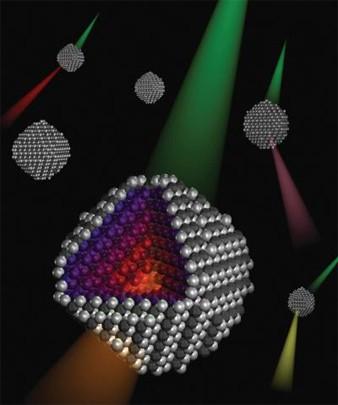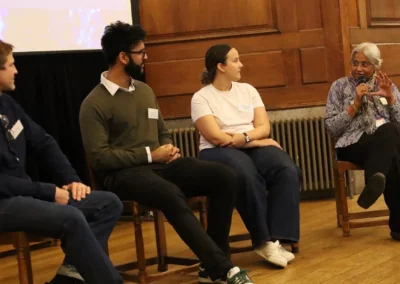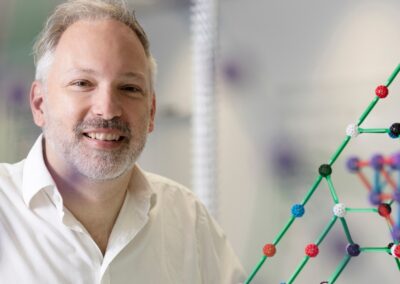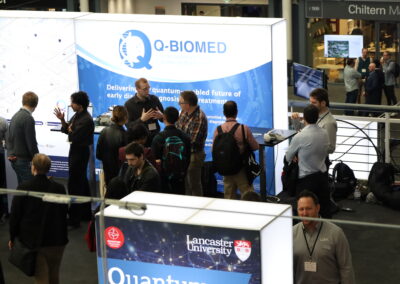Jesse Clark, working as a postdoc in the LCN group of Ian Robinson, has discovered a spectacular transient melting phenomenon in nanocrystals. Coherent X-ray diffraction experiments, carried out at the LCLS X-ray free electron laser facility at Stanford, have allowed snapshot imaging of a single 300 nm gold nanocrystal in the picosecond time interval after the particle was excited with a laser. The crystal was found to expand uniformly following the excitation and to reach the melting point about 50 ps later. What is striking about the result, shown in the figure, is that the crystal melts from the outside and then re-solidifies in synchrony with the induced acoustic vibrations.
This result has significant implications beyond our basic understanding of the melting process. A reproducible molten state of a metal such as platinum could have useful catalytic properties, while preserving the integrity and large surface area of the particle.
Ian Robinson, coordinator of the project said “Bragg Coherent Diffraction Imaging is an emerging X-ray technique with great potential for probing the dynamics of matter. The dynamic imaging of the melting transition, visualised in this work, anticipates a whole new field of materials science in the time domain. I would expect there will be surprise discoveries in the transition regions between classical thermodynamic phases, with the possibility of entirely new transient phases of matter.”
The work was supported by a European Research Council Advanced grant entitled “nanosculpture”.
Click here to see the full research article, Imaging transient melting of a nanocrystal using an X-ray laser, published in PNAS.



